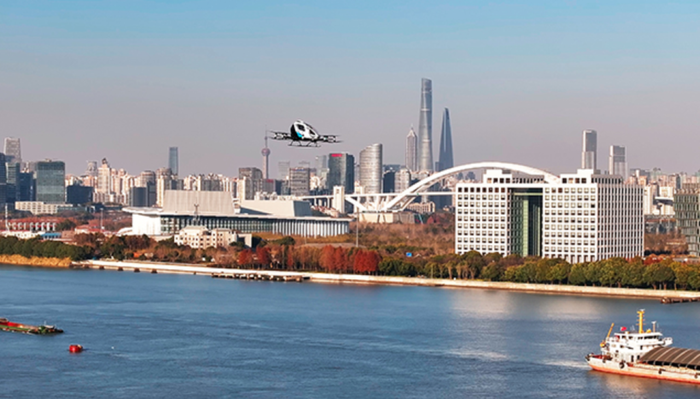Drone Sightings: The Rundown on What Is Being Seen and HeardDrone Sightings: The Rundown on What Is Being Seen and Heard
They are very loud, the size of car and we don’t know where they are coming from

Outside of speculation of any government being behind or aware of the many drones being seen over New Jersey and other areas, there are some potential characteristics of the sightings that may be explained.
Based on the extensive research conducted for my book “Flying Vehicles: The Emergence of Personal Air Travel, Flying Cars, and Air Taxis,” here are comments based on some of the thousands of reported sightings
“They are very loud, like a Harley.” The rotors of electric aerial vehicles (EAV) are very loud, most notably at closer range. A person flying in an EAV requires ear protection from the noise, it is so loud. Additionally, if a helicopter is in the same area as an unmanned aerial vehicle (UAV), that sound could potentially be mistaken for the sounds coming from a UAV. The larger the drone, the louder the noise.
“They are very quiet.” At a distance, the rotors or propellers of EAVs and unmanned aerial vehicles (UAV) generally cannot be heard. For example, at one demonstration of EAVs in New York City, media on the ground commented that they could see but not hear the EAV they were watching being demonstrated. A smaller drone can be relatively quiet.
“They are the size of a car.” Industrial-grade drones can be very large and could have propellers at significant distances from each other, potentially portraying great size, which would be accurate though not necessarily with a similar volume of a car. However, there also are very large drones designed for various things, such as transporting cargo. These have been publicly showcased in numerous countries, including China and the United Arab Emirates.
For more drone and other emerging tech news subscribe to our free newsletter!
“Our drone got close and then the thing took off and evaded it.” Most EAVs have anti-collision sensing technologies built in, since in the coming electric aerial revolution, there will be thousands of unmanned aerial vehicles flying simultaneously and no one wants them bumping into each other in the air. Drones also have an emergency return-to-home feature, so those could be deployed in the case of a drone being flown by an individual.
“We don’t know where they’re coming from.” Over the weekend, two men were reported arrested for flying a drone too close to Logan Airport in Boston. Using drone tracking technology, police could track the location and altitude of the drone and flight history, leading them to the remote drone operators. Tracking things, including things that fly, is not new and has become very sophisticated. As we wrote in one of my previous books relating to The Internet of Things, “anything that moves can and will be tracked.” This includes things that fly.
“We saw several of them together.” Flying drones in fleets or swarms also is not new. This has been demonstrated countless times in drone light shows, where hundreds of drones are controlled by one ground-based computer to work in unison. However, those are miniature drones, not typically the category being observed. Much larger drones, even those large enough to carry a person or two, can be flown as a fleet, has been demonstrated in China. Drones seen flying in a group or in any type of unison, would be less likely to be managed by an individual and more likely to be operated by an organization equipped with sophisticated technology.
“We saw many over the course of a night.” With somewhere in the vicinity of 1 million drones being registered in the U.S., some of the drones being seen are likely some of those, though a totally unknown percentage. Many more drones also are being seen since so many people now are watching for them.
“They have lights.” Planes, boats and drones are mandated to display green and red lights, primarily so approaching vehicles can tell in advance of the direction of the opposing vehicles. (Green on right, red on left). Drone anti-collision lights are supposed to be visible for up to three miles. Strangely, many of the sightings noted the green and red lights, which could mean it is a plane or a drone, following Federal Aviation Administration (FAA) rules. The operators or programmers of at least the drone in those sightings seem to be following the lighting rules. There also is the remote possibility that since drone night-flying was approved late last year, more drone owners have gotten into the act. Again, a remote possibility.
“They left and went to the ocean.” Drones generally are electrically operated and need charging. The more advanced drones can run for longer periods and fly great distances. With the number of drones being reported, the charging facility would need a sufficient power source. Some electric aerial vehicles can be charged in as little as 10 minutes, and those are of the larger variety.
These are only some of the possible explanations for some of the drone sightings.
Interestingly, the sightings so far seem to be only at night, when many airports have wound down for the day.
The drone issue has the potential to become seriously dangerous if the unmanned aircraft systems (UAS) start encroaching on controlled air space. Then the sightings will be the least of the drone issues.
About the Author
You May Also Like








